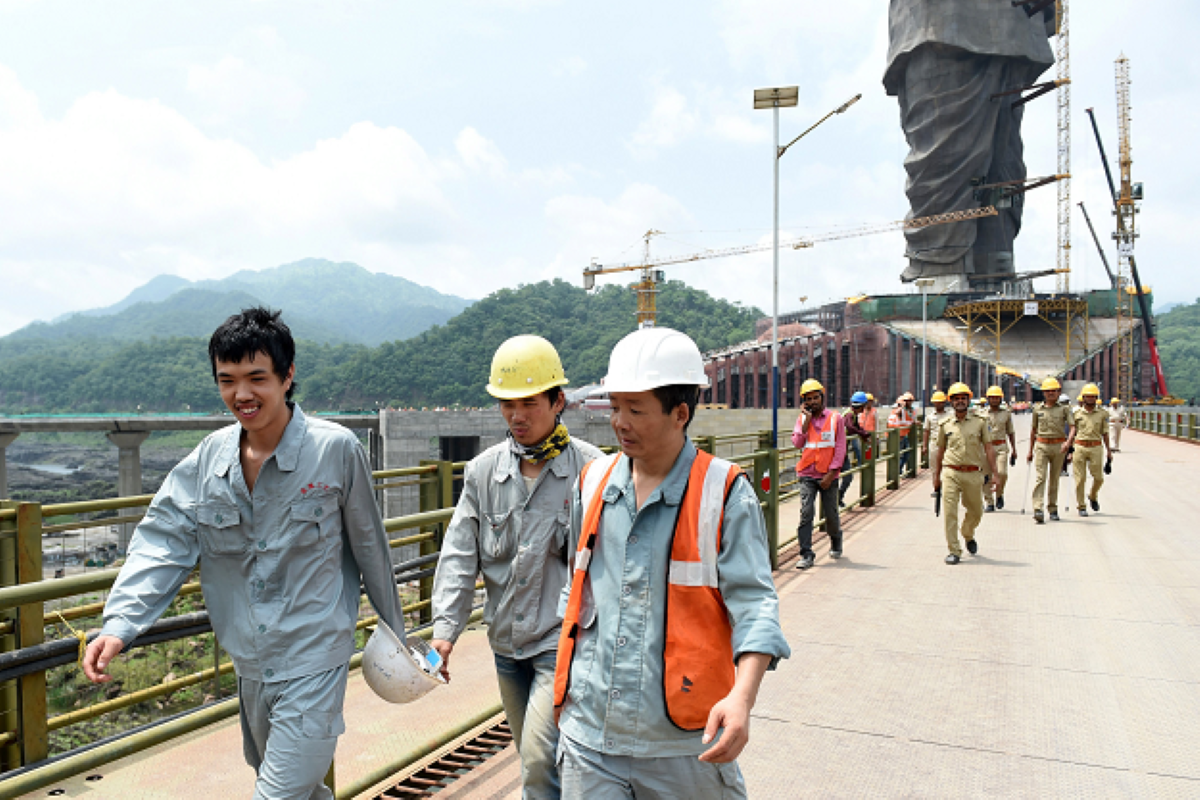With the Taliban beginning to wield its influence in Pakistan, Chinese workers have started arming in order to protect themselves while carrying out maintenance works at various China-Pakistan Economic Corridor (CPEC) projects in Pakistan, intelligence agencies stated.
After the deadly attack on a bus carrying Chinese engineers to the Dasu dam site in Upper Kohistan in Khyber Pakhtunkhwa on July 14, which killed nine Chinese nationals, the Pakistani establishment’s failure to protect the Chinese workers has been exposed.
Advertisement
A massive sum of Chinese money has been pumped in to create, train and equip two Special Security Divisions (SSDs) — the 34 and 44 Light Infantry Divisions — with 15,000 troops each. While the 34 Light Division was created in September 2016, the 44 Light Division was developed in 2020.
The Pakistan army had asked for and received money for equipping these divisions. However, it has failed to carry out its duties completely and has been at the receiving end of insurgent attacks, the most deadly being the attack carried out in Ormara on Oct 15, 2020 when 14 Pakistan security personnel were dragged out of a bus and killed by Balochi militants.
Chinese workers and engineers, wherever they work within Pakistan, are guarded 24×7 by armed guards, making them hostage to the Pakistan army.
“This has led to a number of near-riot situations where fistfights have turned ugly, especially when it relates to the Chinese using Pakistani army vehicles to visit and frequent red-light areas,” said a source, adding that if history is anything to go by, most of Pakistan’s troubles have been the result of Chinese involvement in its internal affairs.
Earlier, SSD officers have been implicated in various embezzlement schemes involving Chinese money. Also, Chinese money has been used to buy artillery pieces and combat helicopters, which do not fit into the scheme of things of a force trying to protect human assets from terrorists.
Pakistan has attempted to strengthen its conventional capabilities under the farce of asset protection, just like it did with the Americans. Not only this, the maritime force created by the name of Task Force 88 has been given two frigates, which again do not fit this scheme.
The July 14 bomb blast is not the first attack on the Chinese nationals in Pakistan, whose work ethics and culture, apart from the rapacious nature of the Chinese CPEC projects, have upset the locals.
Given the current situation in Afghanistan, even the western borders of Pakistan have become active, with groups like ISIS and TTP rampaging against Pakistani troops.
Since the Taliban offensive, the Chinese have been quietly paying the Taliban and the Haqqani Network to keep the lid closed on probable East Turkestan Islamic Movement (ETIM) assaults against Chinese interests. As it is, with a pressure-cooker like situation in Xinjiang, there is a huge likelihood of revolts and riots breaking out in the besieged province, a stark rerun of 2009.
The weapons adorning the persons of the Chinese engineers are most likely bought off the shelf from the Haqqanis.
“The Chinese workers are not known for their compassionate behaviour towards other nationalities and this has been evident from their actions in large parts of Africa as well as Pakistan, where they have assaulted Pakistani soldiers and gotten away with it,” the source said.
It is only a matter of time when they fire their bullets in anger, causing mass casualties, the source said.
Further, Pakistan’s Inter-Services Intelligence (ISI) even tried to deflect the anger by attempting to run hashtags on Twitter such as #CPECMakingProgress, but all in vain as the entire Belt and Road Initiative’s pivot in South Asia threatens to implode in Pakistan, creating conditions for chaos and anarchy.











